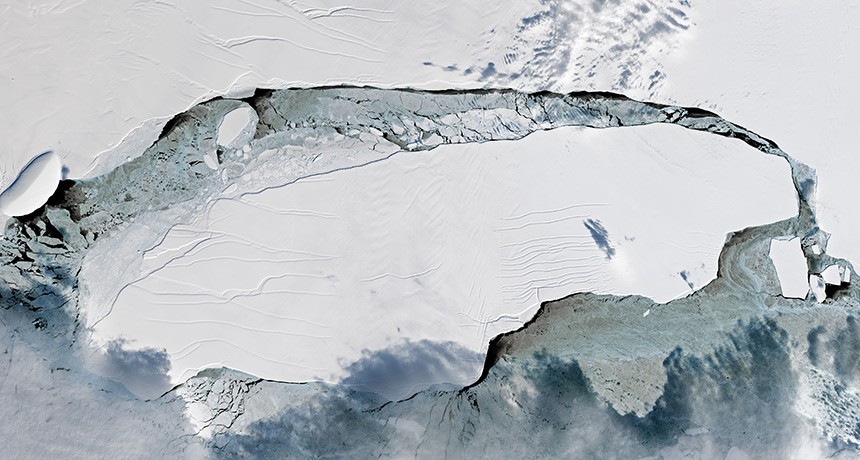The Larsen C ice shelf break has sparked groundbreaking research
Anticipation of one of the biggest rifts ever detected reached a fever pitch in summer 2017

WIDENING GULF A Delaware-sized iceberg calved when a crack in the Larsen C ice shelf reached the Weddell Sea this year. In this satellite image from September, rifts are visible in the ice and clouds cast a shadow on the new iceberg.
NASA Earth observatory, joshua stevens, Landsat data, USGS